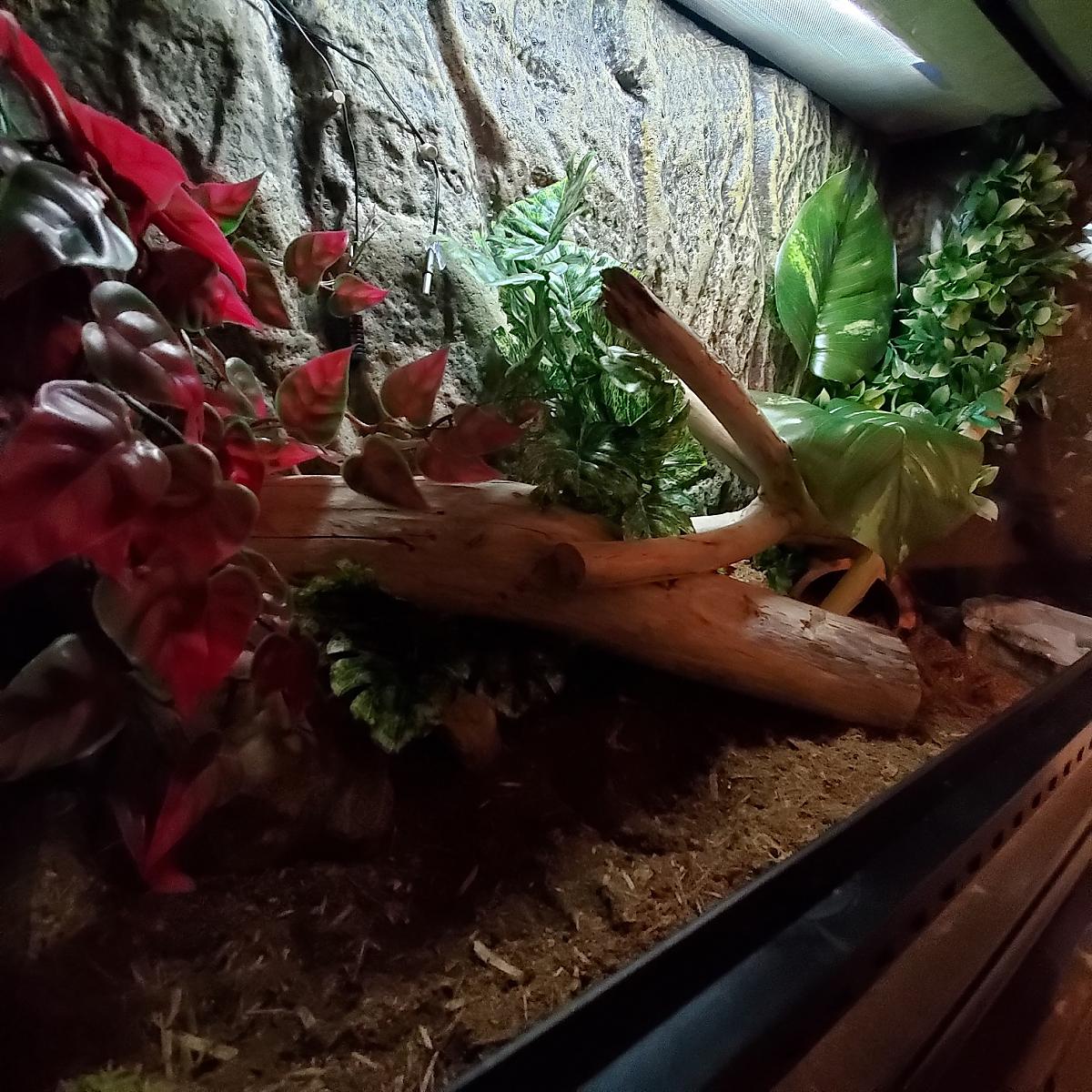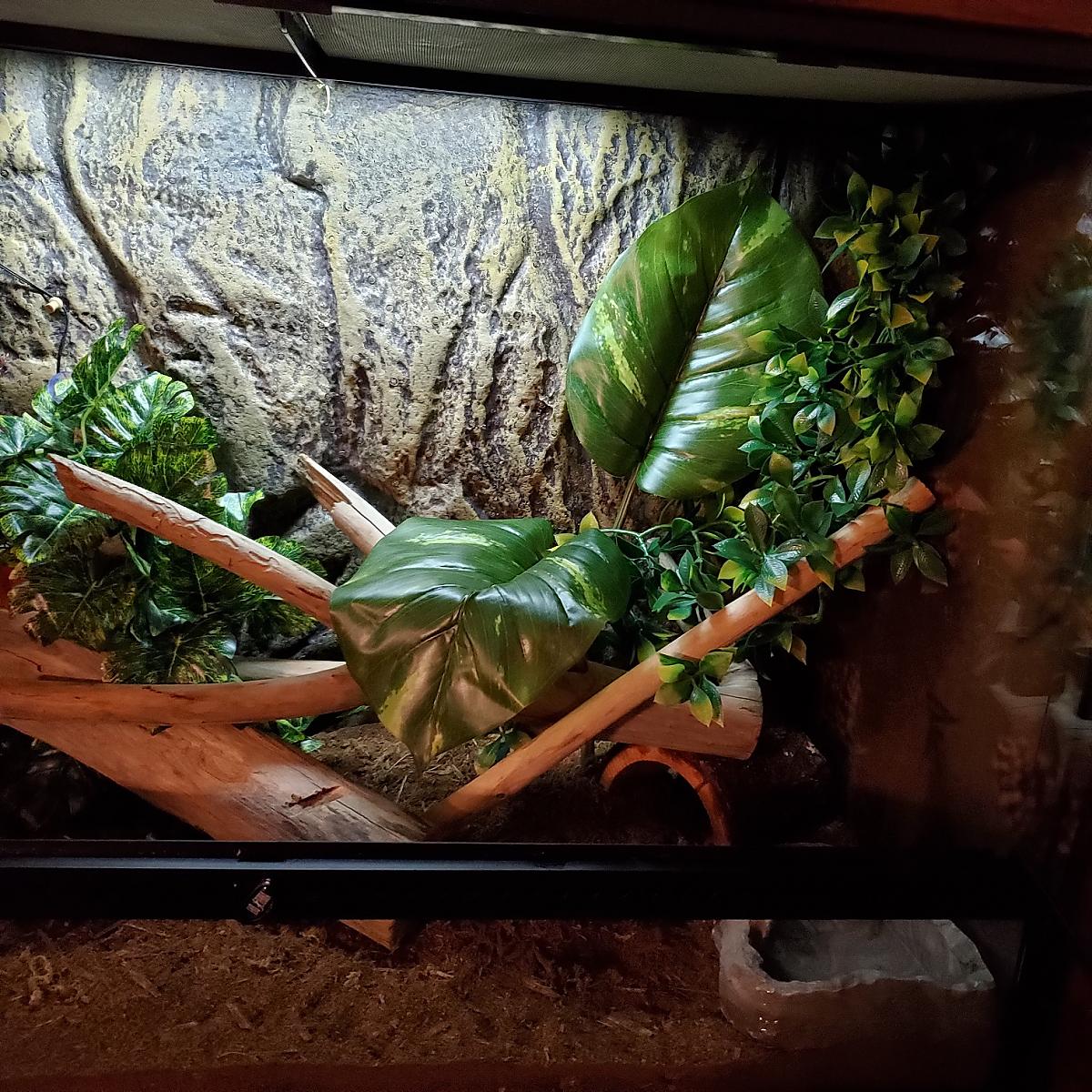Makes sense. I will amend the plan to install the thermostat sensor as shown. What do you use to keep the thermometer probe in place under the substrate?
Yep, my hope is that if I add a ceramic heat emitter it will knock down the humidity while increasing the ambient temps. I live in Washington State, our average humidity is somewhere around 60%, but I have a wood insert that drops the humidity down to 35 - 45% in the winterIn regards to humidity, that is definitely too high. I personally use a combination of a UTH and a CHE for my ball which keeps her humidity perfectly in check! Something to note here though is I live in a very humid area so it is a battle for me to lower my humidity.
Ah ok, I'll give that a go. I've been able to get substrate surface up to 80 degrees with 1-inch cover. I also added two hides and "inside hide" temps are now 88 - 90. Cool side is still 72 and ambient is still around 72 - 73About the substrate depth - what bcr229 means is over the UTH the substrate should be very shallow to allow heat transfer. The other parts of the vivarium are able to have thicker substrate.
No, it was the bag of lose stuff. The cedar mulch is what had all the moisture, even the bag was getting condensation inside just from sitting in the room.Another note- you say you have Eco-Earth coconut fiber substrate. Was this one of the condensed bricks you needed to add water to? If it was that would also hugely raise your humidity if you only have a UTH on your vivarium.
BN-Link digital heat mat thermostatWhat kind of thermostat(s) did you order?
https://www.amazon.com/gp/product/B0...?ie=UTF8&psc=1
Sure - I am not a very good photographer. This is what I've done so far, the habitat has been "operating" for about a day, decor so far was added this morning.Would you mind sharing a picture of your viv for reference? A tank that big would need a lot of clutter for a baby ball python to actually feel secure in, and it would help with suggestions to better prepare you for your BP!















 Reply With Quote
Reply With Quote